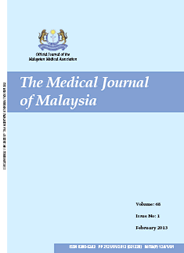MJM, Vol 70 Supplement 1 September 2015
Sampling design of the Malaysian Adults Nutrition
Survey 2014
*Institute for Public Health, National Institutes of Health, Malaysia, **Department of Statistics, Malaysia
ABSTRACT
Introduction: The Malaysian Adults Nutrition Survey (MANS) 2014 (MANS) was a nationally representative survey of non-institutional adults aged 18-59 years, residing in Malaysia for more than 30 days and inhabiting the selected living quarters for at least 2 weeks prior to data collection.
Objective: The objective of the survey was to describe meal pattern, habitual food intake, dietary intake, vitamin, mineral and food supplement intake, food security, nutritional status and physical activity pattern among Malaysian adults aged 18-59 years old.
Methods: There were eleven research scopes included in the survey. A multistage stratified cluster was adopted here. The stratification was by zone and urban/rural localities. The Primary Sampling Unit (PSU) was Enumeration Block (EB) based on information from the 2010 Census. A total of 337 EBs were selected from the total EBs in Malaysia (187 urban EBs, 150 rural EBs). The Secondary Sampling Unit (SSU) consisted of Living Quarters (LQs) within the selected EBs. Twelve LQs were randomly selected from each selected EB. The Final Sampling Unit (FSU) comprised of eligible individuals from the selected LQs. Where there was more than one eligible adult between the age of 18 and 59 years living in the same LQ, only one person was selected at random to take part in the survey using a modified Kish table.
Results: The overall household response rate was 95.3% from a total of 4044 sampled households in this study. The household response rate was higher in Peninsular Malaysia and in rural areas. Of the 3574 completed household interviews, there were 3000 individuals who completed the individual interview (calculated person-level response rate was 84.4%). The overall response rate was 80% for the whole country.
Conclusion: In conclusion, a robust methodology was utilised to ensure the production of quality data for MANS 2014.
